Nolen gur diye suji aka Bengali suji recipe is one of the most comforting and delectable winter sweets with jaggery which spreads happiness and makes any ordinary day special with its warmth, soothing flavour and irresistible taste. It is a traditional Bengali sweet with jaggery where roasted semolina is cooked with milk and nolen gur aka jaggery with some dry fruits, cardamom powder and bay leaf. This Jaggery Sweet is a very simple and easy-to-make recipe and is mostly served as a sweet evening snack.
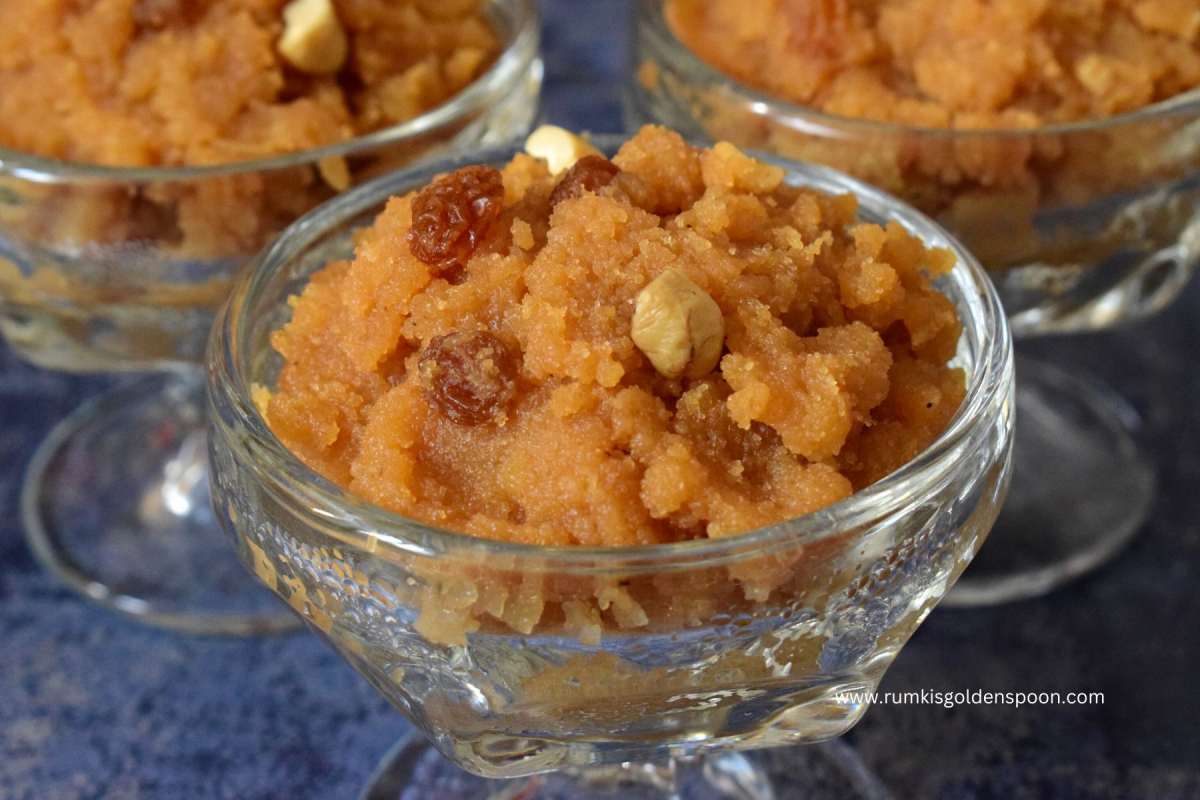
Table of Contents
About the recipe
Tips and Suggestions
How to make Nolen Gurer Suji (step wise photos)
Recipe Card
About the recipe
Nolen gur diye suji aka Bengali suji recipe is very popular and mostly prepared in every Bong house during winter. It is like a ritual, which we follow happily, blindly and crazily, to devour the stunning seasonal dessert. Since my childhood, I am having this Bengali-style suji every year with a lot of ease, excitement and joy. I have learnt this recipe from my mother and every year I prepare it at least twice.
Every Bengali feels nostalgic whenever they talk about Nolen Gur. There is an eternal bonding between Bongs and Nolen Gur. As a Bengali, I always get emotional when I talk about Nolen gur. According to me, every Bengali would have countless beautiful memories of this extraordinary delight. The name Nolen gur sounds like music to a hardcore Bengali and triggers their taste buds. But for a non-Bengali, it is quite complicated to understand the love which consists in every Bengalis’ heart for Nolen Gur. Many of my non-Bengali friends asked me about it.
What is Nolen Gur?
Nolen Gur mainly constitutes of the sap or juice which is collected from khejur gach, I mean palm tree by making a slit in the stem of the tree. An earthen pot is tied beneath the slit to extract the juice overnight during the winter season in West Bengal. The next morning, the collected sap is pulled down from the tree and it then goes through the process of preparing the Gur or jaggery.
There are two different varieties of Nolen Gur that are available in the market. The solid form of Nolen Gur is usually referred as patali gur or khajur patali gur and the thick liquid form of it is referred as Jhola gur.
The term Nolen Gur is a Bengali word where ‘Nolen’ means ‘New’ and ‘Gur’ refer to ‘Jaggery’. For this reason, it is also called “Notun gur”. Nolen Gur is known by different names in different regions. It is also known as “Khejurer Gur” in a few parts of Bengal. It is popular as Date Palm Jaggery outside West Bengal.
In the early days, people used to wait for the whole year to enjoy the delight. In fact, in our childhood days, Date Palm jaggery was available only during winter but now it is available throughout the year in many cities and on online websites as well. All thanks to technology and refrigerators, with the help of which we can buy and preserve Nolen gur for the whole year. So, many reputed restaurants serve Nolen Gur sweets throughout the year. While many small towns still wait for the winter to get the Date Palm Jaggery.
As per my knowledge, every Bengali house in West Bengal brings Nolen gur from the market in the winter season to prepare payesh, pithe puli and many more mouth-watering desserts. It is like an old ritual to prepare varieties of nolen gur recipes which has happily been carried forward for years. In fact, during the winter season, every house is flavoured with Nolen Gurer Payesh for any special occasion.
I am obsessed with Nolen gur and when I was in West Bengal, I used to buy it frequently from stores and used to preserve them in the refrigerator for the rest of the year. But after coming to London, I started missing it badly in my kitchen pantry. After a few weeks of search, we managed to find a store where Nolen gur is available throughout the year which is not less than a boon to me.
After coming to the UK, I started craving for sweets with jaggery, payesh, pithe-puli etc. Then I decided to roll up my sleeves and prepare nolen gur recipes at home to satisfy my appetite.
My husband is not a big fan of regular Bengali suji recipe. But when I prepared Nolen gur diye suji at home for the first time, my husband just dug into it and finished almost half of it. Now, it’s compulsory to prepare Nolen gurer suji too at the breakfast with fulko luchi during Durga puja to enjoy “Bangaliana”.
Nolen gurer suji is a very simple and easy recipe prepared with only a few basic ingredients. All the ingredients are easily available in any Bengali or Bangladeshi stores. It is a rapid dessert recipe prepared within 20 minutes. It could be a great option for sudden guests.
Nolen Gurer suji with step-by-step photos and instructions have been provided in the ‘Instructions’ section of the recipe. I have included all the tips and tricks to prepare soft and non-sticky Bengali suji recipe and to make the recipe easier for you.
Tips to prepare perfect nolen gurer suji
- Roast the semolina aka sooji perfectly until it changes colour from white to light golden. But don’t make it brown.
- Stir the semolina constantly for even roasting.
- Always roast the semolina at medium to medium-low flame. Don’t roast it at high flame or else it may burn or get over-roasted. Then the semolina will taste bitter.
- You can use any flavourless oil to cook the dish. I have used sunflower oil for the recipe.
- Stir the suji continuously during the time of addition of milk to avoid lumps.
- Add the jaggery aka Nolen gur after mixing milk in semolina.
- Don’t skip bay leaf and cardamom powder. It enhances the flavour of the Bengali suji.
- The addition of dry fruits provides richness and gives a nice bite to the dish.
How to make nolen gurer suji?
To prepare nolen gurer suji, first put a pan on flame and allow it to become completely dry. Then add oil or ghee into the pan and wait until it’s hot. Once the oil is hot, tear a bay leaf into two pieces and put it into the pan. Cook it on a medium flame for 30 seconds.
Then add semolina into the pan and give a nice stir. So the oil gets mixed nicely with semolina. Turn the flame to medium and roast it for around 4 minutes until the semolina changes its colour to a light golden brown. Stir the content continuously for even roasting.
Now, turn the flame low and add milk slowly. At the same time, stir the semolina vigorously so no lumps occur.
Then add chopped cashew nuts, raisins, cardamom powder into the pan and mix it nicely. Cook it at the lowest flame for a minute.
After this, add the date palm jaggery aka nolen gur and mix it well. Cook it on low flame until the jaggery melts completely. Then cook it on low flame for a minute and then switch off the flame.
Many nolen gur recipes have already been shared in my previous posts. You can check a few of them like
Nolen gurer Sandesh
Nolen gur Rosogolla
Nolen gurer payesh
Nolen gurer ice cream
Nolen Gur kalakand
Nolen Gur phirni
..And Many more…
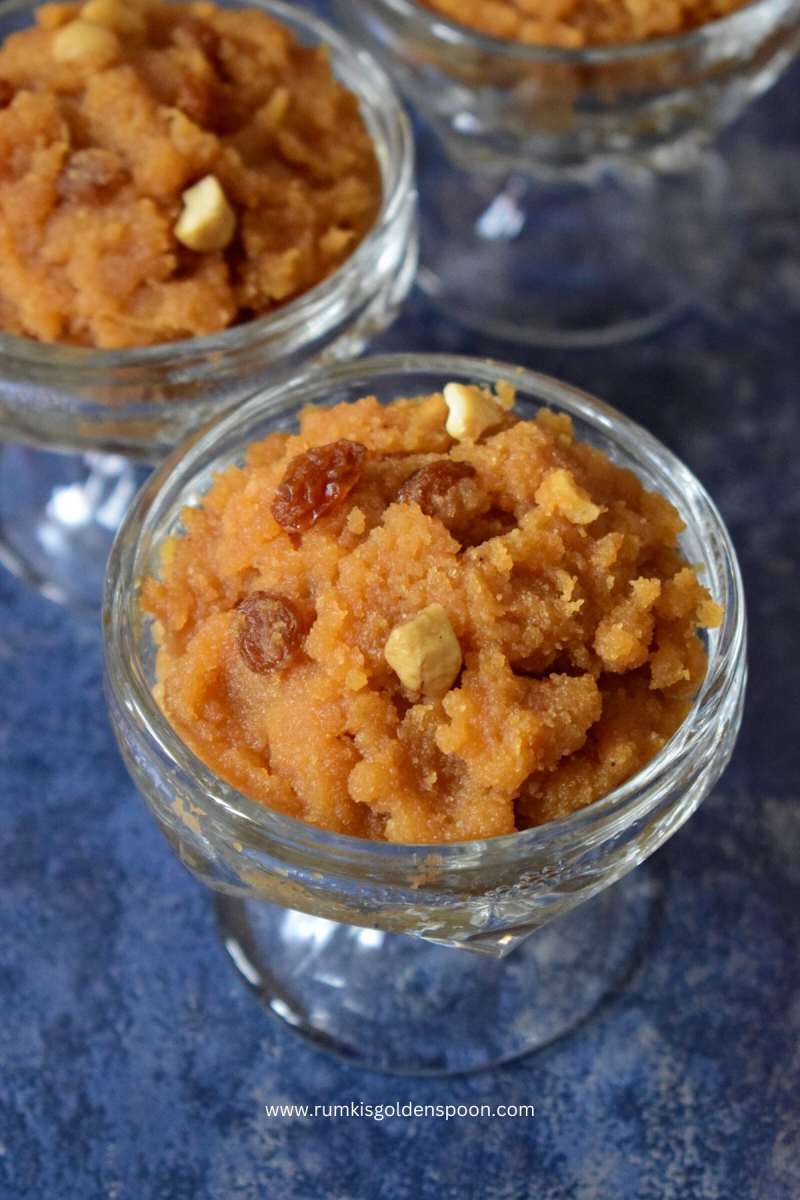
Ingredients:
1 cup = 250 ml
- 1 cup Semolina (Suji)
- 1 cup Date palm jaggery (Nolen gur)
- 2 Cups full fat Milk
- 1 Bay leaf
- ½ teaspoon Cardamom powder (Elaichi powder)
- 1 tablespoon Raisins (Kishmish)
- 1 tablespoon Cashew nuts, broken
- 1 tablespoon Oil or ghee
Instructions:
- Put a pan on flame and allow it to become completely dry. Then add 1 tablespoon oil or ghee into the pan and wait until it’s hot.
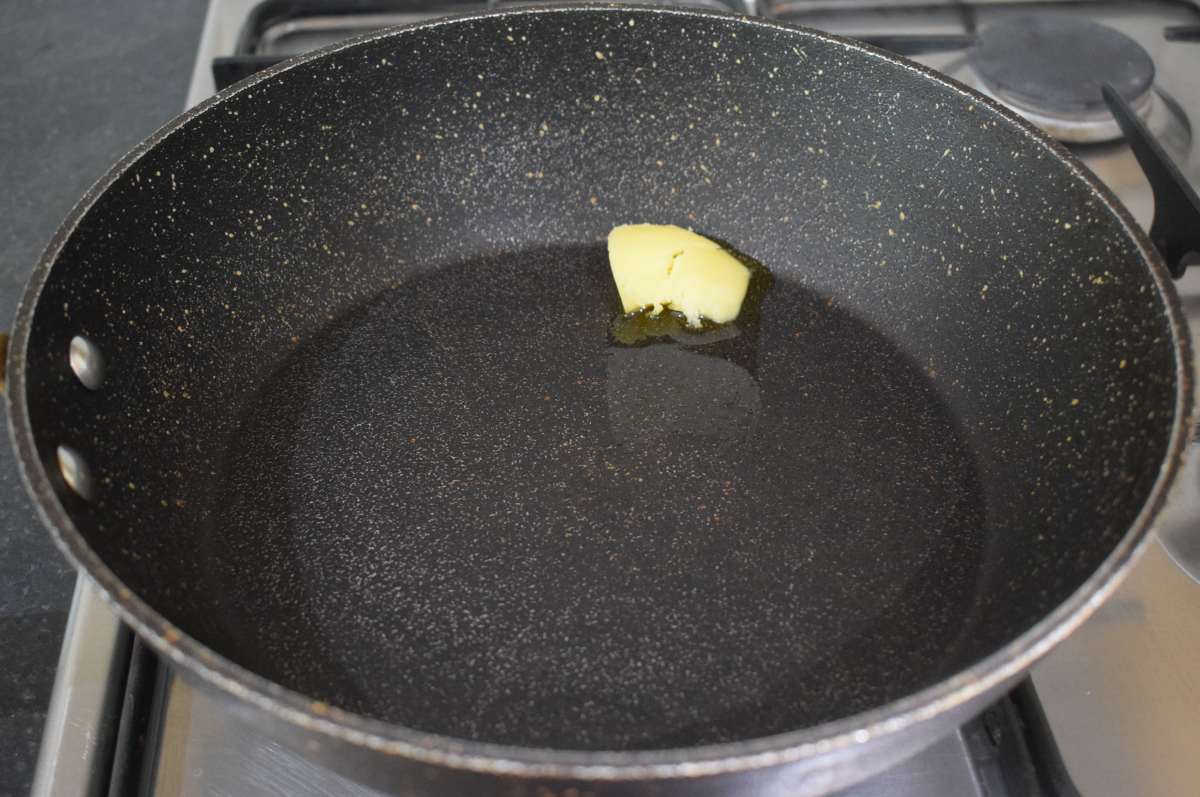
- Once the oil is hot, tear a bay leaf into two pieces and put it into the pan. Cook it in medium flame for 30 seconds.
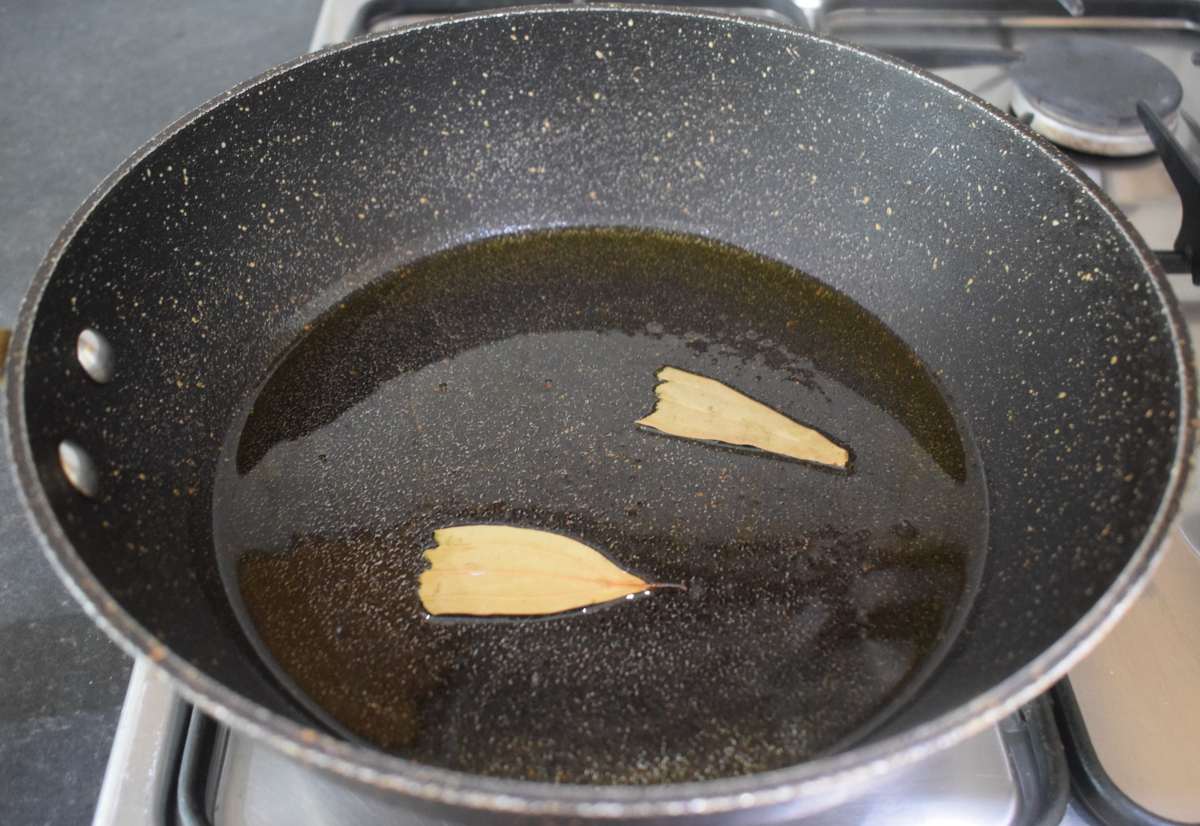
- Add 1 cup semolina into the pan and give a nice stir so that the oil gets mixed nicely with the semolina. Turn the flame to medium and roast it for around 4 minutes until the semolina changes its colour to a light golden brown. Stir the content continuously for even roasting.
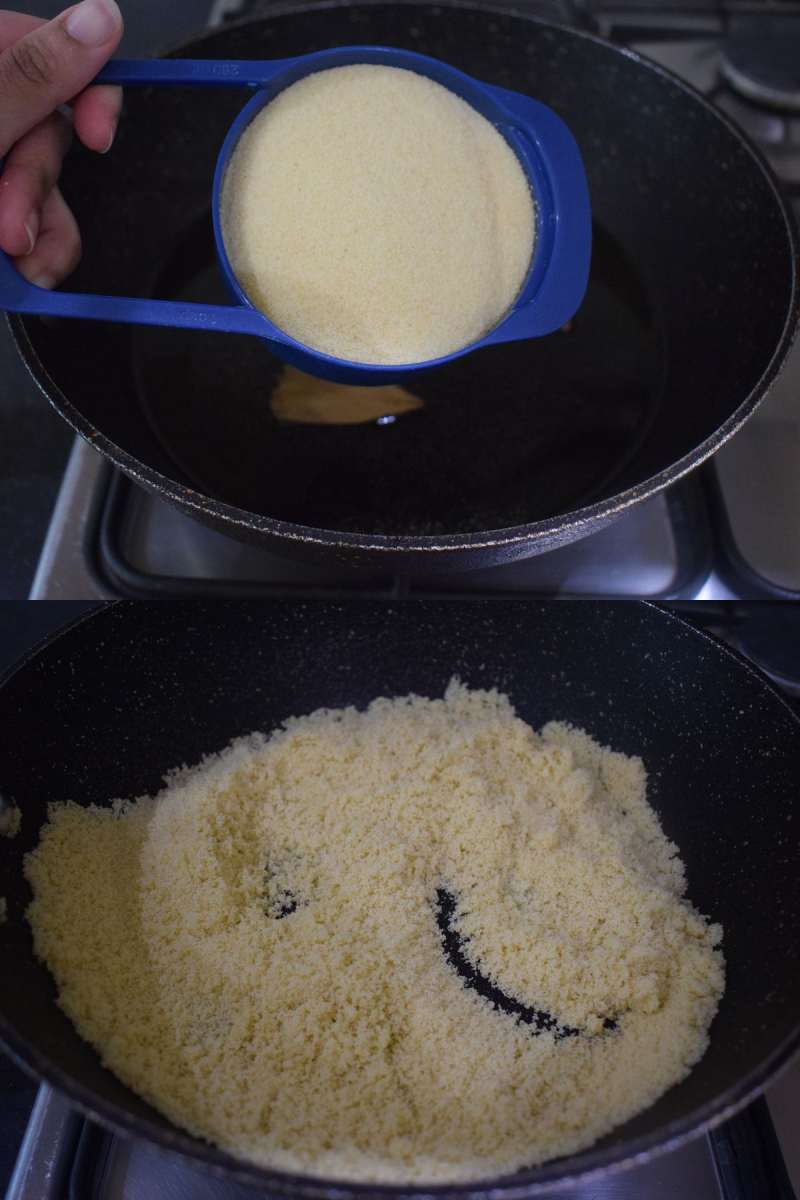
- Turn the flame low and add 2 cups milk slowly. At the same time, stir the semolina vigorously so no lumps occur.
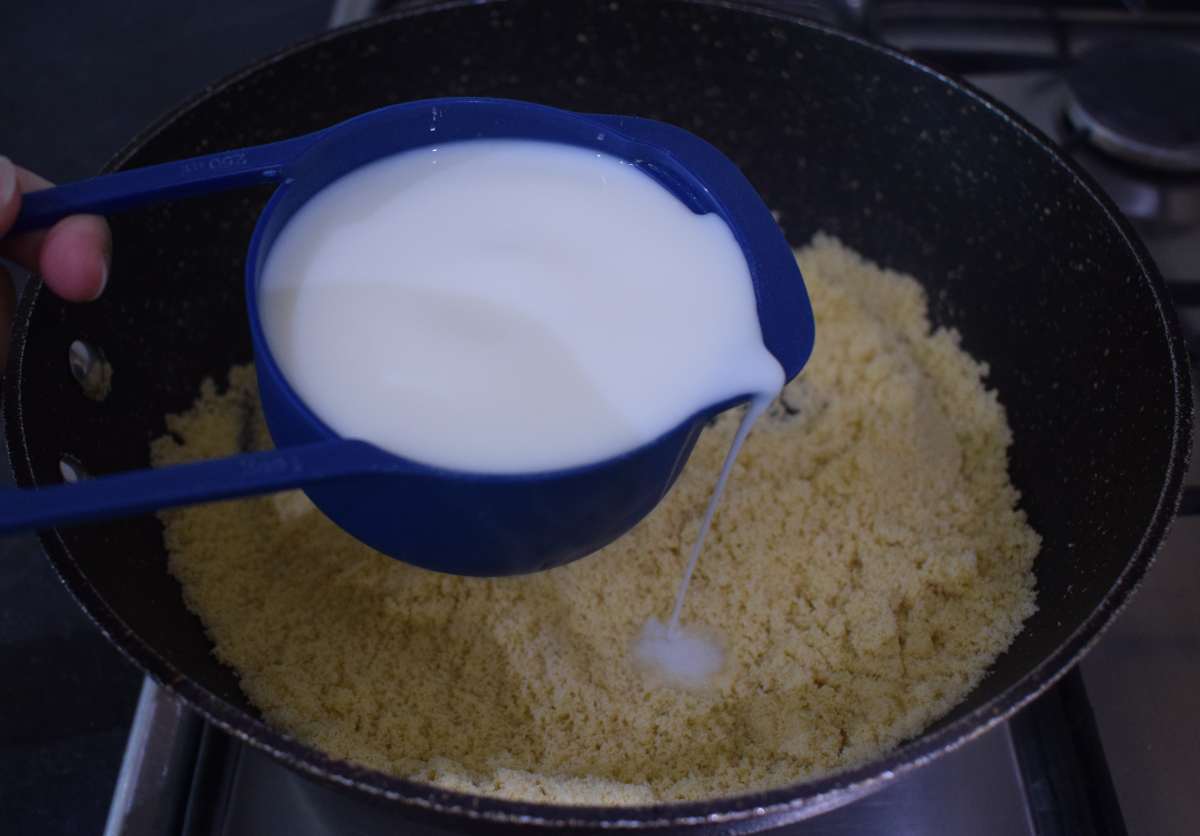
- Add 1 tablespoon chopped cashew nuts, 1 tablespoon raisins, ½ teaspoon cardamom powder into the pan and mix it nicely. Cook it at the lowest flame for a minute.
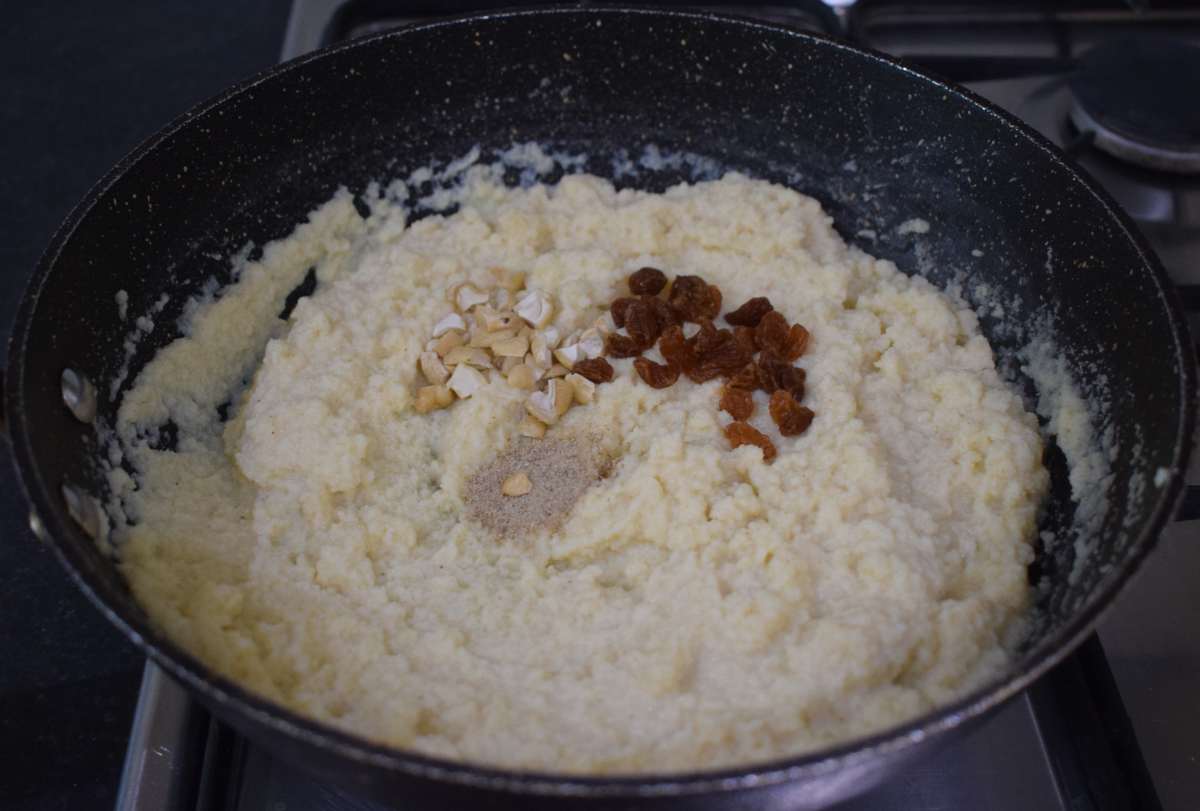
- Add 1 cup date palm jaggery aka Nolen gur and mix it well. Cook it on low flame until the jaggery melts completely. Stir it continuously.
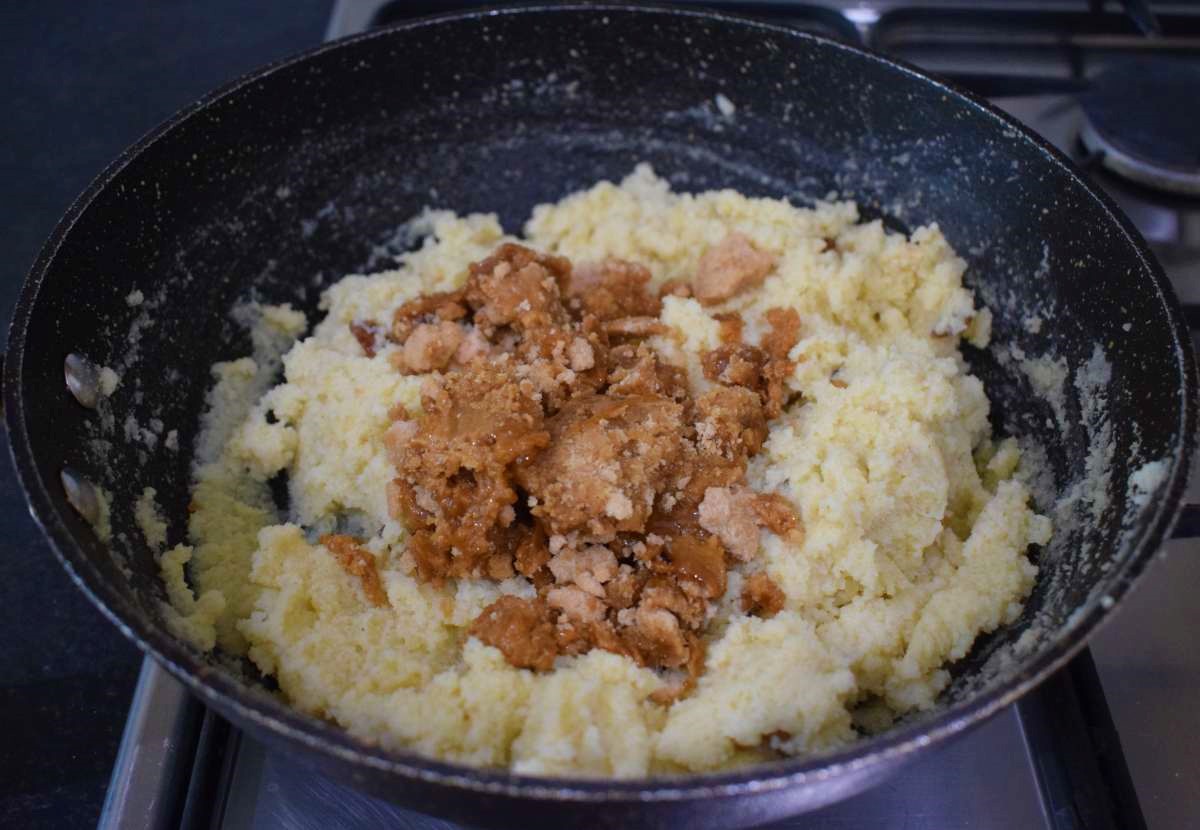
- Cook it on low flame for a minute and switch off the flame.
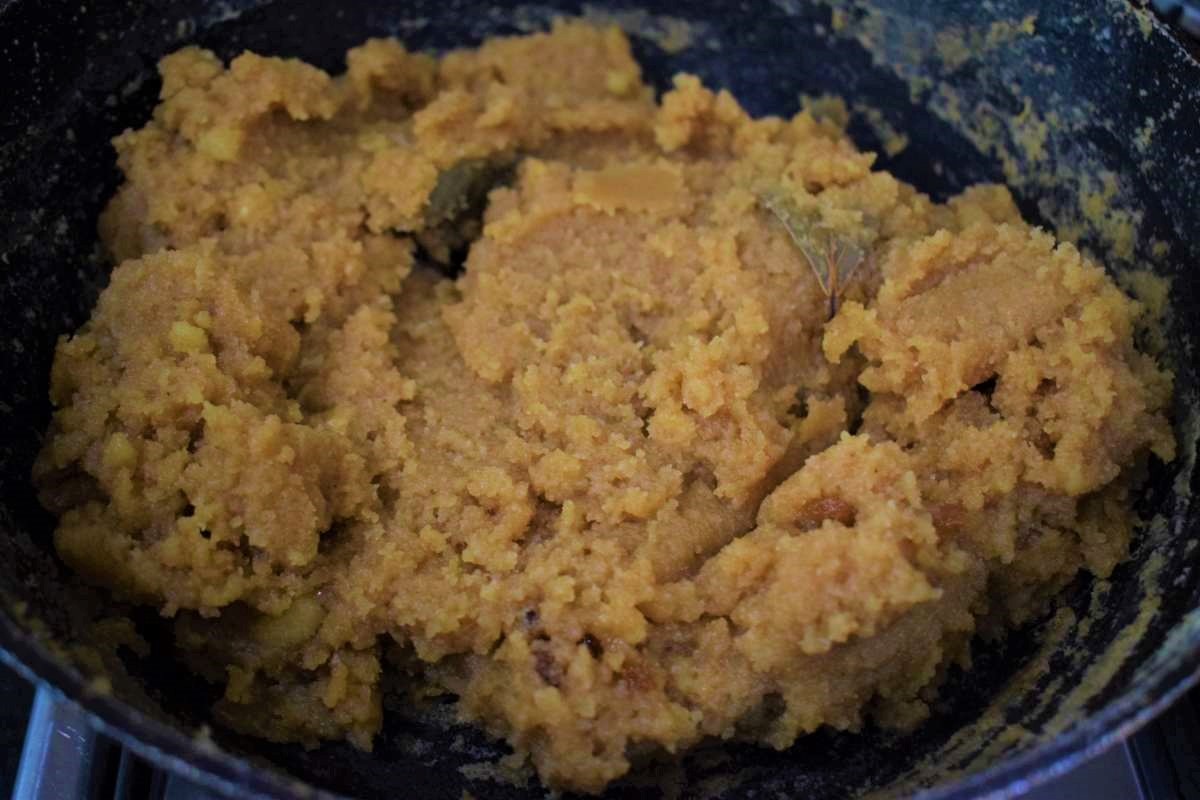
Serving Instruction
Serve the Nolen gurer suji into serving bowls. You can choose to serve it either at room temperature or warm. It tastes yummy in both conditions. Serve this luscious dessert to your friends, relatives, family and spread happiness.
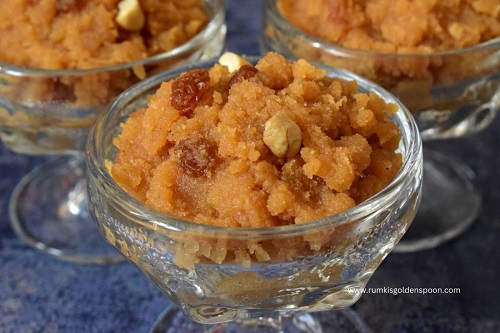
Ingredients
1 cup = 250 ml
- 1 cup Semolina (Suji)
- 1 cup Date palm jaggery (Nolen gur)
- 2 Cups full fat Milk
- 1 Bay leaf
- ½ teaspoon Cardamom powder (Elaichi powder)
- 1 tablespoon Raisins (Kishmish)
- 1 tablespoon Cashew nuts, broken
- 1 tablespoon Oil or ghee
Instructions
- Put a pan on flame and allow it to become completely dry. Then add 1 tablespoon oil or ghee into the pan and wait until it’s hot.
- Once the oil is hot, tear a bay leaf into two pieces and put it into the pan. Cook it in medium flame for 30 seconds.
- Add 1 cup semolina into the pan and give a nice stir so that the oil gets mixed nicely with the semolina. Turn the flame to medium and roast it for around 4 minutes until the semolina changes its colour to a light golden brown. Stir the content continuously for even roasting.
- Turn the flame low and add 2 cups milk slowly. At the same time, stir the semolina vigorously so no lumps occur.
- Add 1 tablespoon chopped cashew nuts, 1 tablespoon raisins, ½ teaspoon cardamom powder into the pan and mix it nicely. Cook it at the lowest flame for a minute.
- Add 1 cup date palm jaggery aka Nolen gur and mix it well. Cook it on low flame until the jaggery melts completely. Stir it continuously.
- Cook it on low flame for a minute and switch off the flame.

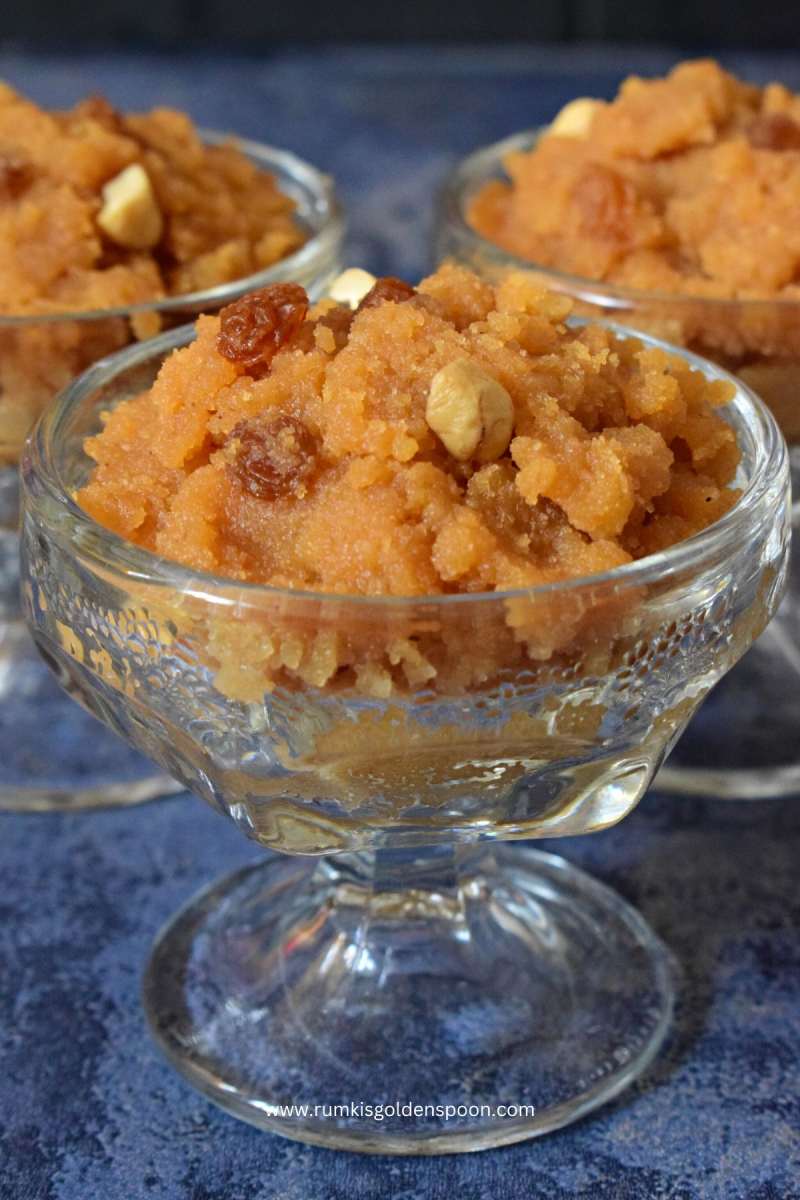
1 comment
[…] 8. Nolen gur diye suji Nolen gur diye suji aka Bengali suji recipe is one of the most comforting and delectable winter sweets with jaggery which spreads happiness and makes any ordinary day special with its warmth, soothing flavour and irresistible taste. It is a traditional Bengali sweet with jaggery where roasted semolina is cooked with milk and nolen gur aka jaggery with some dry fruits, cardamom powder and bay leaf. This Jaggery Sweet is a very simple and easy-to-make recipe and is mostly served as a sweet evening snack. […]